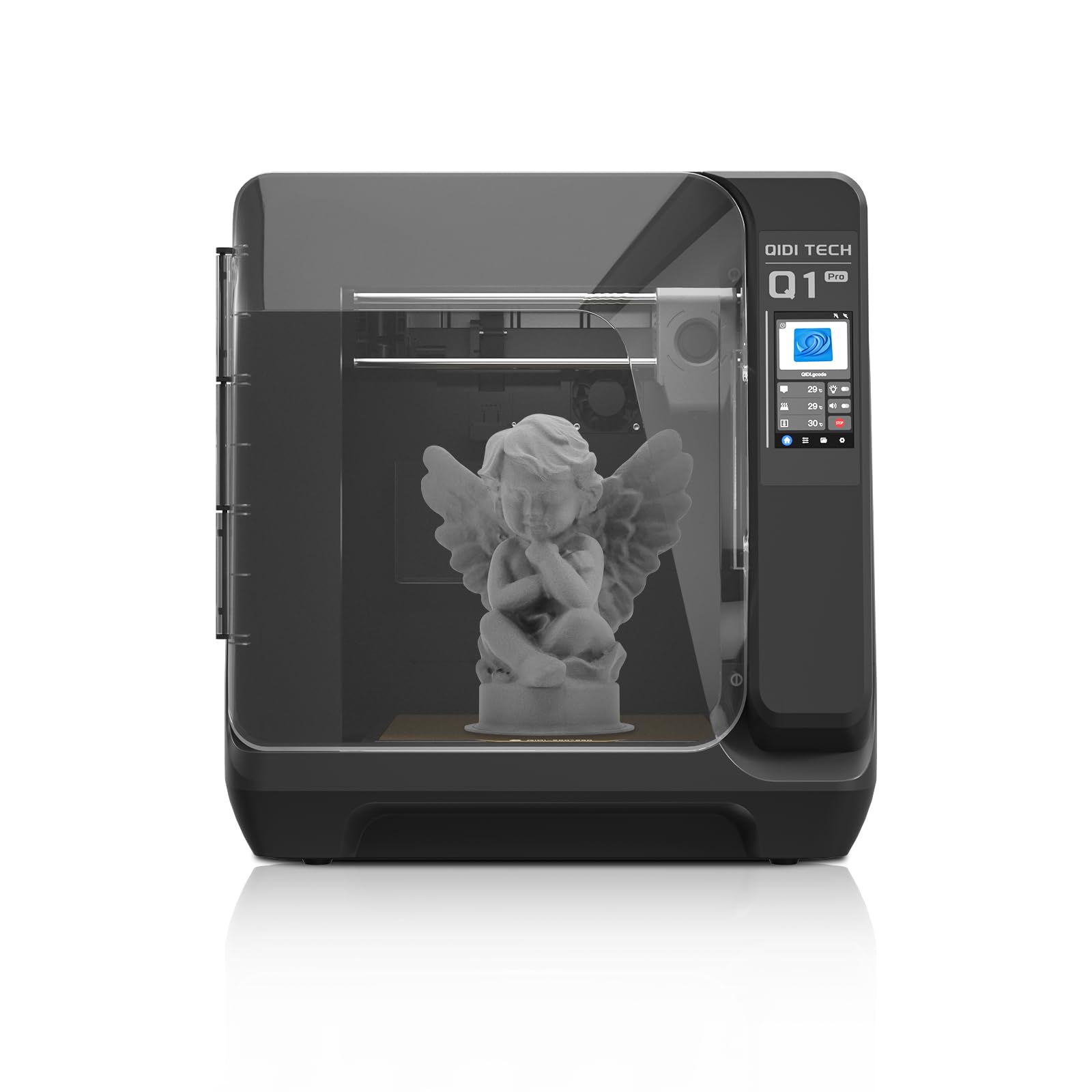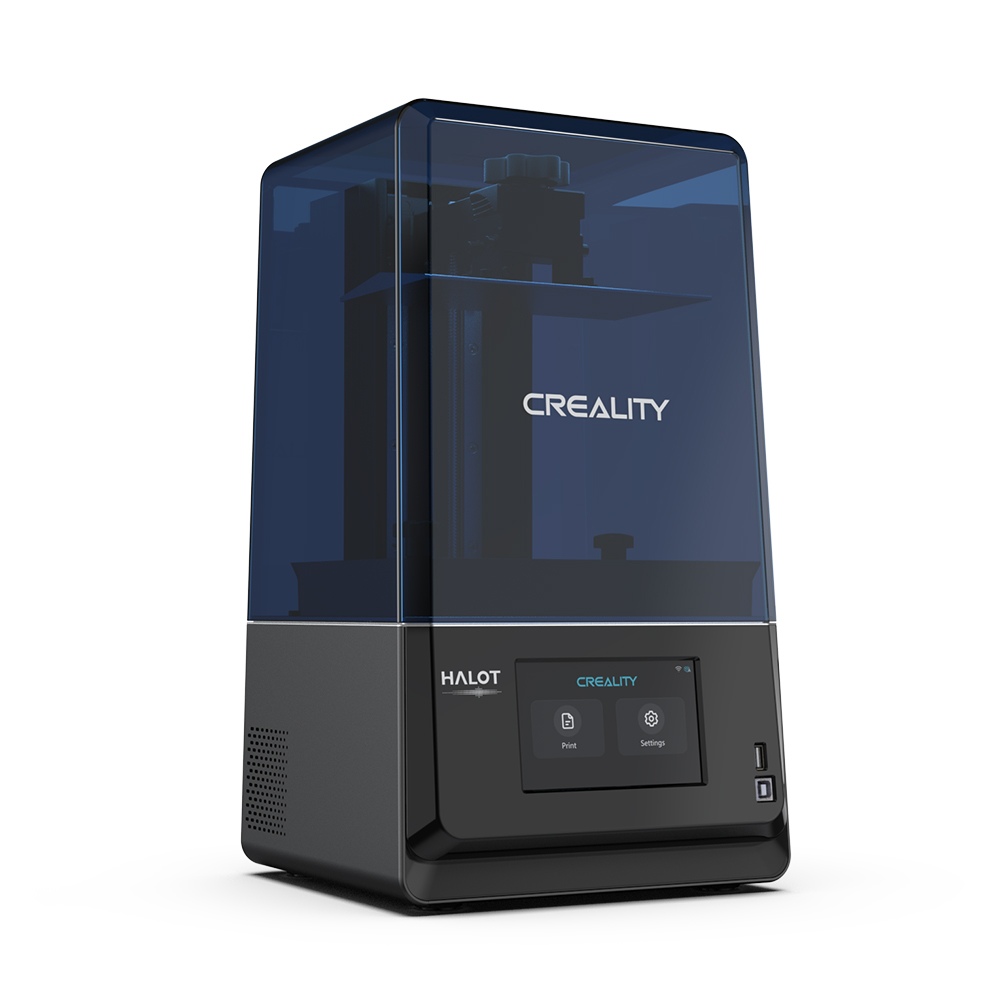Compare Q1 PRO vs Halot One Plus
Comparison between the best 3D printers
Choose the best 3D printer at the best price. The cheapest 3D printers are here.
Buy a 3D printer here with 3D Fila.
 |
 |
|
| Model | Q1 PRO[BUY Q1 PRO] |
Halot One Plus[BUY Halot One Plus] |
| Printing Material | Filament | Resin |
| Buy Filament for QIDI Q1 PRO | Buy Resin forCreality 3D Halot One Plus | |
| Estimated price | $449,00 | $399,00 |
| Manufacturer | QIDI | Creality 3D |
| Release Year | 2024 | 2022 |
| Print Volume [mm] | 245x245x245 | 102x172x160 |
| Printer Size [mm] | 467x477x489 | 236x245x416 |
| Weight [kg] | 20 | 6,8 |
| Power Loss Recovery | YES | NO |
| Maximum Resolution [mm] | 0,1 | |
| Processor | Cortex-A53,64-bit Processor | |
| Display | Touchscreen 4,3'' | |
| Power Supply | 350 W | |
| Connectivity | WiFi/USB Flash Drive/Ethernet Cable | USB / Wi-Fi |
| Operating systems | Windows, Linux, Macbook | |
| Date of registration in the system | 2024-07-09 | 2022-10-11 |
| Release date | 2024 | 2022 |
| Extra features | The QIDI Q1 Pro 3D printer stands out for its Core XY structure and heating chambers that reach up to 60ºC, ideal for advanced materials such as ABS and Nylon. It features Klipper firmware, an automatic leveling system, a high-flow extruder with a double metal nozzle and a hotend that reaches 350ºC. It offers connectivity via Wi-Fi, USB and Ethernet, as well as a 1080p camera for remote monitoring and an intuitive touchscreen for easy operation. | Crealitys Halot-One Plus printer stands out for its 4K+ resolution that delivers sharp details and consistent surfaces. It features a fast and responsive 5-inch LCD interface, as well as easy-to-use Halot Box software. It offers Wi-Fi connectivity and remote print monitoring, as well as an integrated air filtration unit, a rare feature in this price range. The Halot-One Plus is designed for the prosumer market, combining high quality with advanced features such as Wi-Fi and air filtration. During testing, it stood out for implementing these features at an affordable cost, while maintaining functionality. It features an attractive design with a UV-resistant blue cover and a robust dual rail system for the Z-axis, ensuring smooth and consistent movements. The large LCD and high resolution of the LCD mask (4320 x 2560) are other strong points, allowing for fine details and textures in prints. |
| Support for multiple colors and materials (AMS and CFS) | NO | NO |
Notes * |
||
| Cost-benefit | 8 / 10 | 8 / 10 |
| Hardware | 4.8 / 10 | 1.2 / 10 |
| Tela | . | . |
| Print volume | 3 / 10 | 3 / 10 |
| Performance | 5 / 10 | 9 / 10 |
| [BUY Q1 PRO] | [BUY Halot One Plus] |
Conclusion |
| In comparing the QIDI Q1 PRO and the Creality Halot One Plus, both 3D printers offer unique advantages that cater to different user needs, but they also have their respective limitations. The QIDI Q1 PRO, priced higher, boasts a significantly larger print volume, which makes it ideal for users looking to create larger models or multiple prints simultaneously. It also features advanced capabilities such as a higher temperature hotend, making it suitable for a wider range of materials, including ABS and Nylon. Furthermore, its robust connectivity options, automatic leveling, and high-quality camera for remote monitoring enhance its usability and versatility, reflecting its design aimed at professionals or enthusiasts seeking advanced features. In contrast, the Creality Halot One Plus is more affordable while delivering impressive performance with its 4K+ resolution, which results in exceptional print detail. Its integrated air filtration system and user-friendly interface make it particularly appealing for users who prioritize ease of use and safety during resin printing. The smaller footprint of the Halot One Plus also benefits consumers with limited space. Ultimately, the choice between these two models will depend on the specific requirements of the user: For those who need versatility and larger build volumes, the QIDI Q1 PRO presents a strong option. However, for users who prioritize high-resolution prints in a compact form factor and at a lower price point, the Halot One Plus is an excellent choice. The decision hinges on whether the user values advanced features and different material capabilities or prefers simplicity and cost-effectiveness. |

